Why are pre-grazing and post-grazing targets important?
Your pastures can help you lower your feed costs and, at the same time, also improve production. But to do that, you’ll need to make sure that your livestock gets enough quality pasture.
Let’s discuss both the quantity and quality of your pastures.
First, let’s talk about pasture quantities. As you know, your livestock needs to eat anywhere between 2% to 3% of their body weight as dry matter intake every day. So, you’ll need to ensure that this happens.
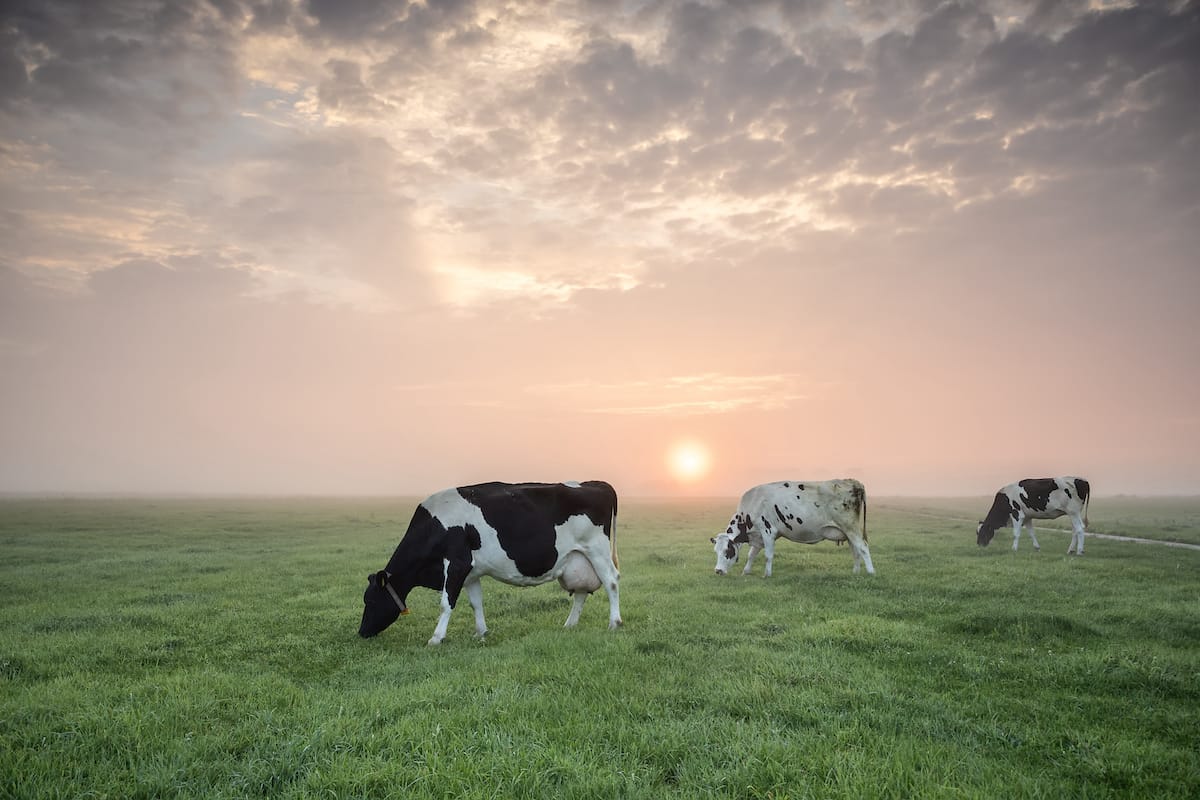
Next, let’s talk about pasture quality. The quality of your pasture will depend on the type of grass you grow and the age of the grass. Grazing your pastures too early can lead to over-grazing and, in turn, lead to pasture degradation.
On the other hand, grazing your pastures too late, after the grass stems begin to thicken and lignin gets deposited in the stem walls and can result in dry matter waste and sub-optimal nutrition for your livestock.
So, it’s essential to get the grazing timing right. Not too early and not too late. This interval will help you improve both animal nutrition as well as pasture yields.
How do you ensure that you graze your pastures at the right time?
You can achieve this by using pre-grazing covers and post-grazing residuals as your guide to making effective grazing decisions.
What should be your ideal pre-grazing and post-grazing targets?
Your pre-grazing cover should fall between 2,700 to 3,500 kg DM/ ha for getting the most out of your pasture. This target is based on a high average pasture intake of about 18 kg DM per cow every day.
This ideal pre-grazing target can help you achieve two outcomes.
Firstly, this allows your cows to graze enough pasture to maintain live weight and improve production.
Secondly, it also prevents over-grazing or under-grazing and allows you to achieve post-grazing residuals around 1500 kg DM/ ha. This residual level is crucial for optimum pasture regrowth.
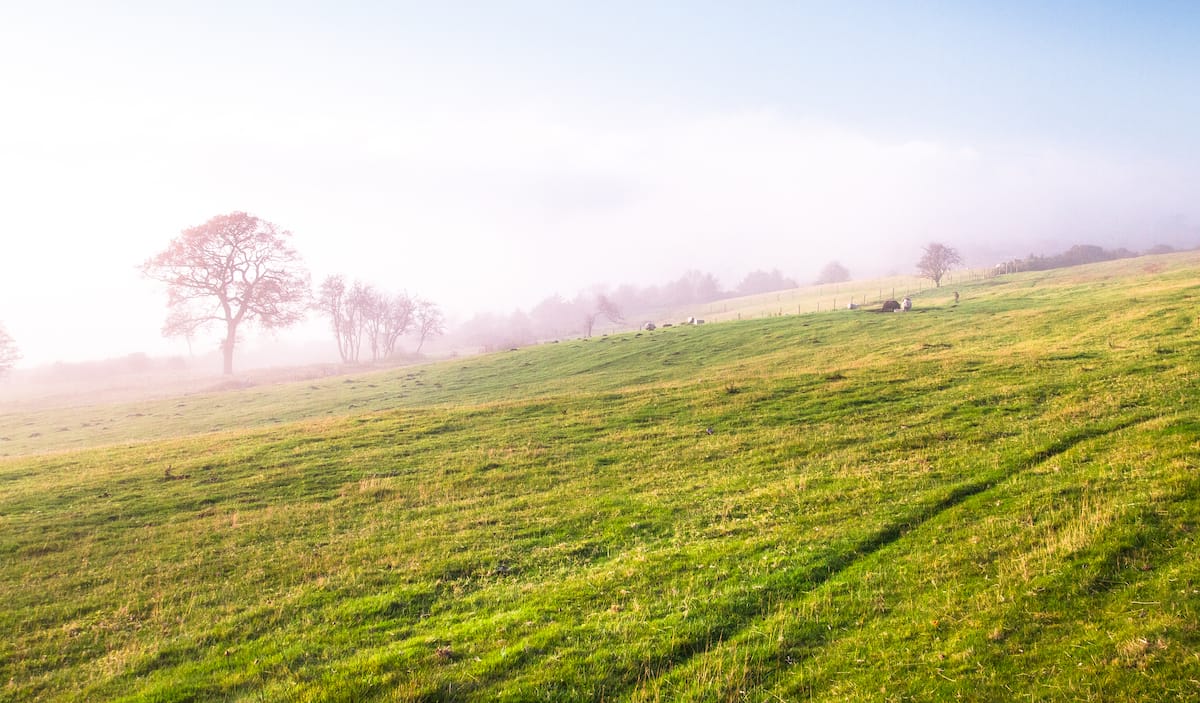
However, if your animals have lower dry matter intakes than this, say around 14 kg DM per cow every day. Either because they are at the end of their lactation period or because of weather conditions.
Then, you might set a pre-grazing target of around 2,500 kg DM/ ha.
Why?
Because you want your post-grazing residuals to be around 1,500 kg DM or more per hectare.
Reaching this residual level after every grazing event will mean that your pastures aren’t over-grazed to the extent that affects regrowth.
But, at the same time, it also means that your pastures aren’t under-grazed to the extent that might lead to poor quality pastures and production.
How to calculate your ideal pre-grazing cover and post-grazing residual levels:
You can find out your ideal pre-grazing cover using this simple formula:
Pre-grazing cover = (Stocking rate x pasture intake x rotation length) + optimum residual
For example, if you have a five cows per hectare stocking rate, you’ll multiply five by your avg. dry matter intake per cow. In this case, let’s use 18 kg of DM per day as our intake. So multiply 5 cows/ha x 18 Kg DM/ cow = 90 Kg DM/ ha.
Next, let’s take your rotation length into account. Let’s say this is 20 days, so multiply 20 days x 90 kg DM/ ha = 1,800 kg DM/ ha.
This calculation means you need about 1,800 kg DM/ ha to ensure that your herd at a stocking rate of 5 cows per hectare, with a 21-day rotation period, gets at least 18 kg of DM per cow every day.
Although we don’t want our cows to graze down the pasture to nothing, do we?
So, we’ll need to add your ideal post-grazing residual target to this.
To ensure optimum pasture recovery and regrowth, let’s take our post-grazing residual target as 1,500 kg DM/ ha. When you add this, we get 1,800 kg DM/ ha + 1,500 Kg DM/ ha = 3,300 kg DM/ ha.
So, for this example, an ideal pre-grazing cover needs to be around 3,300 kg DM/ ha to begin grazing.
Accurate pasture allocation, calculating the ideal pre-grazing cover, evaluating your livestock intake, and maintaining the suitable rotation period can help you achieve your post-grazing residual target after every grazing event.
Not achieving your post-grazing residual target can mean that you’re either under-grazing or over-grazing your pastures. It also can mean that you have poor pasture utilisation rates.
Using Pasture.io to set pre-grazing and post-grazing residuals:
You can access the feed wedge in Pasture.io from the dashboard when you click on Reports.

By default, your feed wedge targets your pre-grazing and post-grazing limits.
Therefore, if you see any negative numbers, it’s because these paddock covers fall below your post grazing residual target.
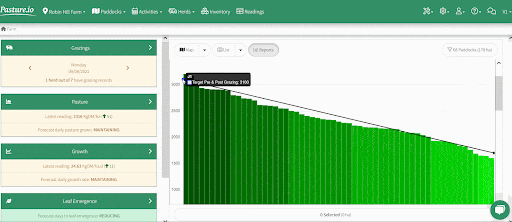
You can see the Pasture.io feed wedge in three ways.
Show each paddock with equal width, sorted for total cover.
Show each paddock relative to its size.
Show each paddock relative to how much feed it has.
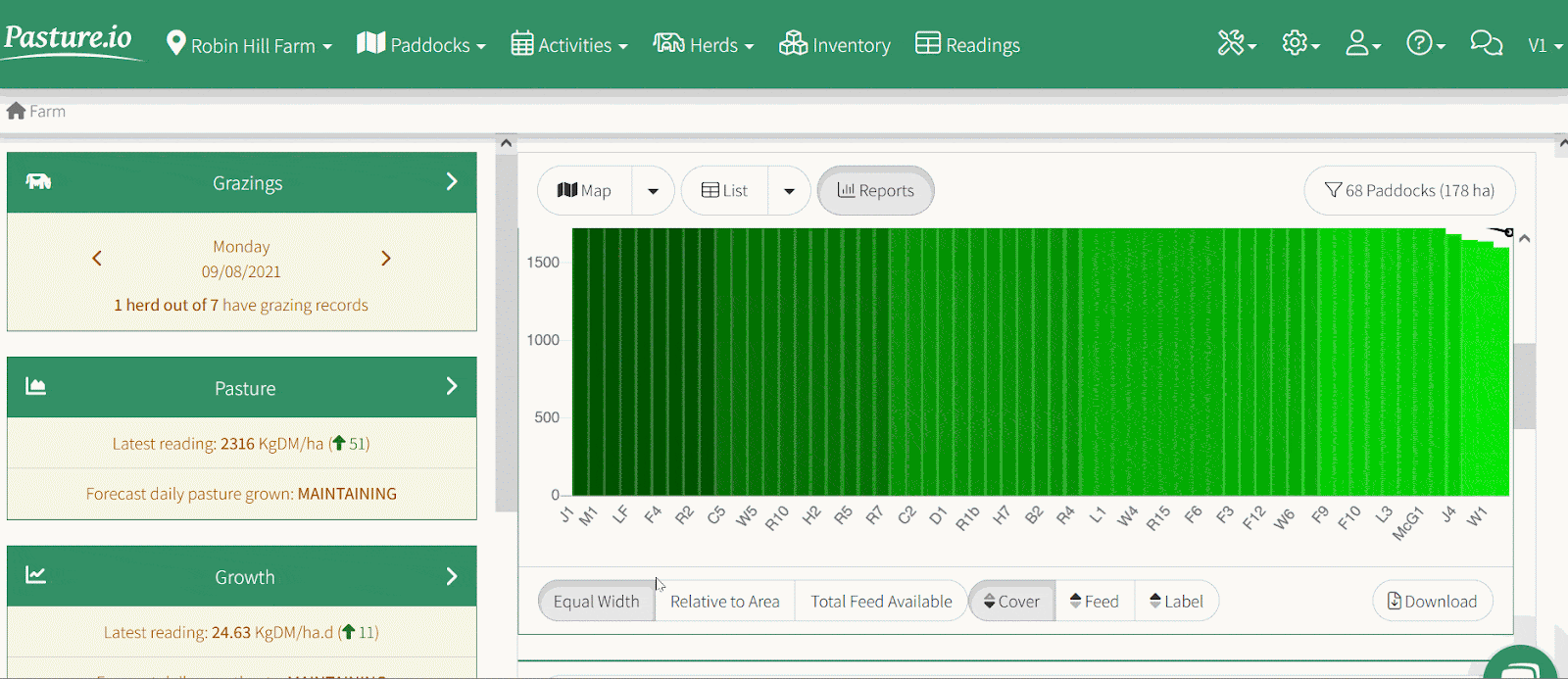
These three options can help you understand where each paddock is, in terms of pasture cover, available feed and paddock size.
This feed wedge, in turn, can help you choose the suitable paddock for your next grazing event.
Want to download this feed wedge?
Want to print it and share this with your employees?
No problem. There’s a download button right below.
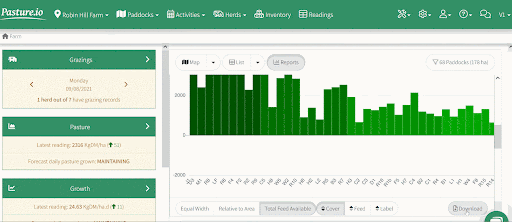
You can also change your pre-grazing and post-grazing targets based on your needs. For instance, in winter, you might be pushing a higher per-grazing mark, say around 3,300 kg DM/ ha.
And then, in spring, when your growth rates are faster, you might want to bring down your pre-grazing targets around to even 2,800 kg DM/ ha because your pastures recover quicker, and you’re trying to limit reproductive growth.
Because Pasture.io gives you your pasture growth rates every day, you can use this to adjust your pre-grazing and post-grazing targets based on your needs.
This precision management will help you make effective grazing decisions that improve your pasture yields and production. Showing (or demonstrating) how we help our farmers earn a 40X return on their investment with us.
Want to learn more about how Pasture.io can help you earn more profits from your pastures? Chat to Pasture.io today.
- The Dedicated Team of Pasture.io, 2021-07-14